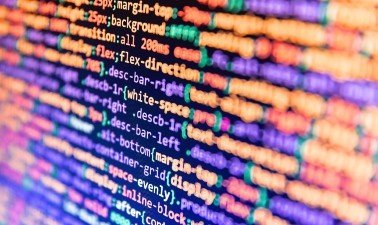“Computer vision student” sounds like a quote from science fiction, don’t you think? In fact, a computer vision engineer is a profession that, although it has not yet become the most widespread, is already rapidly gaining popularity and offers high salaries even at the start of a career.
What is computer vision and what does its developer do?
A computer vision engineer is a specialist who teaches computers to extract information from images. In particular, automatically recognize objects or gestures in images and videos. If a person can visually determine something (for example, find a defect in a product), a computer can also be trained to do this - and thus save time and resources, simplifying many processes.
Developments in the field of computer vision courses are used in a wide variety of companies whose products are related to images or video. This includes the production of self-driving cars, helping doctors interpret MRI images when searching for tumors, and even facial recognition in the subway to identify violators of the self-isolation regime. Computer vision specialists help many e-commerce businesses reduce the burden of moderation: for example, when an ad service like Avito fights trolls who upload pictures with inappropriate content.
Computer vision specialists after computer vision courses are called differently: developers, engineers, and researchers (computer vision scientist). Essentially, a computer vision specialist is more of an engineer who uses mathematics and programming as working tools. So, globally, a computer vision engineer, a computer vision scientist, a computer vision developer and a technical vision developer are one and the same thing.
What does a computer vision developer actually do?
As a rule, the day of such a specialist begins with a stand-up with the team. He then writes code to train neural networks, preprocesses data, and analyzes experiments. A computer vision developer can work alone or in a team, where everyone performs part of a larger task.
As for working tools, the Python language is usually used to write code for experiments, and the Tensorflow or Pytorch frameworks are used to train neural networks. The work also involves special libraries for image processing such as OpenCV. For high-load projects, the C++ language can also be used, since anything written in it is executed many times faster.
Computer vision is a young, dynamically developing field at the intersection of science and engineering, in which there are still more experiments than ready-made solutions. To grow, a specialist here needs to constantly learn. But it is the novelty and non-standard nature of the tasks, as well as the opportunity to create something truly innovative, that brings many people into this profession.
What do they teach in computer vision classes at AI Education?
Training at the best computer vision course typically consists of three modules: creating infrastructure, basics of machine learning and studying computer vision.
The first block at a computer vision online course can be called introductory. Since specialists in the field of computer vision rely on knowledge of mathematics and programming when solving problems, at the start they will have to study from scratch or brush up on topics from higher mathematics, mathematical analysis and linear algebra, as well as work with the Python language. Don’t worry if your knowledge is limited to school mathematics, which was “long ago and not true”: we will help you improve the necessary topics in the first module, so that in the future all students can move through the program at the same rhythm.
The second module is entirely devoted to machine learning. It helps solve computer vision problems faster and easier. For example, for facial recognition, you can expertly describe facial features based on questions that are asked when compiling an identikit. Or you can feed the algorithm a lot of photographic portraits with markings about which face belongs to whom, and then the algorithm itself will learn to extract features by which faces can be identified. In the future, if you need to determine who is in the photo, the algorithm will only need a database of portraits. If there is a photo of the person you need, the system itself will easily find him.
In the second module you will examine probability theory and mathematical statistics. Students will practice solving problems using fundamental algorithms and data structures in Python, become familiar with Python libraries for Data Science (NumPy, Matplotlib), as well as machine learning algorithms.
Finally, in the third module at this machine vision course you will analyze the main tasks of computer vision, we will work with mathematical morphology and the OpenCV and PIL libraries!










